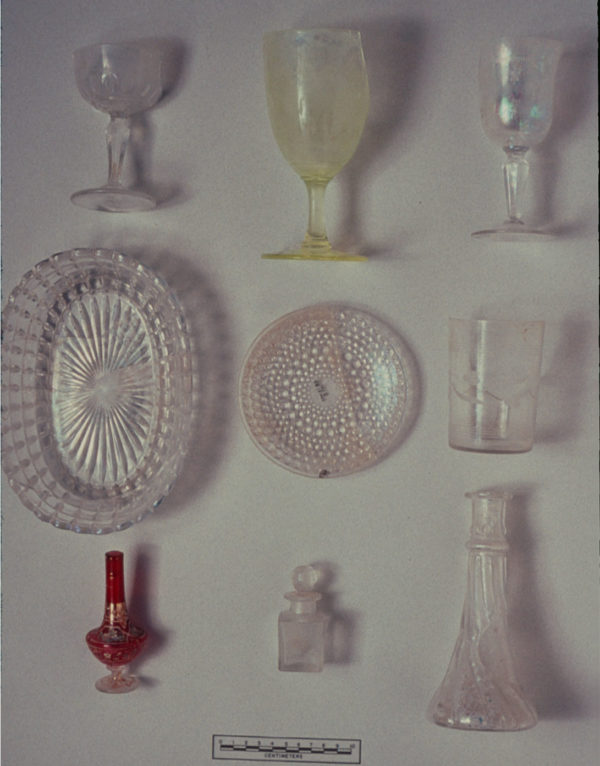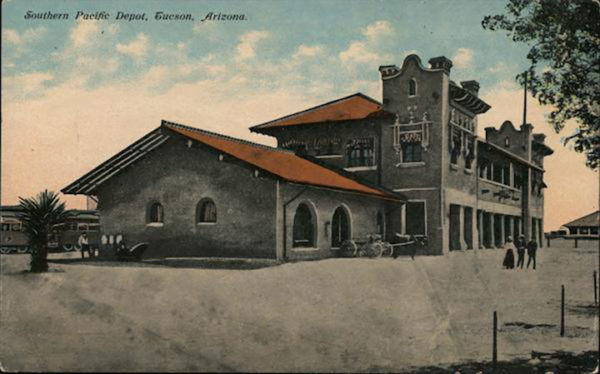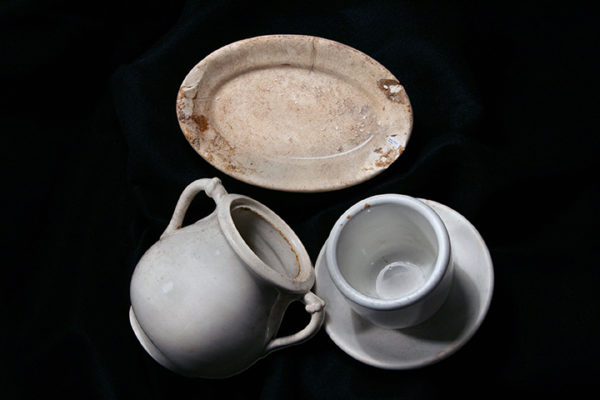
Archaeology Archive: Block 83 in Downtown Tucson
Homer Thiel digs into the archives to tell the story of downtown Tucson’s Block 83. The block is currently occupied by the MLK Apartments and the Ronstadt Transit Center, but over 100 years ago it was the site of single-family homes and saloons, hotels, restaurants, and other businesses.
Desert Archaeology explored two halves of Block 83 over a 26-year period. The block is bounded by East Congress Street (historically East 10th Street) on the south, North 6th Avenue on the west, East Pennington Street and North Toole Avenue on the north, and North 5th Avenue on the east. It was divided in half by North Arizona Avenue.
Sanborn Fire Insurance maps, available on the Library of Congress website, document the block beginning in 1883. These maps were created to allow insurance adjustors in far-off cities to evaluate the insurance potential of properties. Cartographers visited communities every few years and carefully documented buildings, while also noting the location of water pipes and fire hydrants. The maps were color coded to show the main materials of buildings (brown=adobe brick, pink=fired brick, yellow=wood). Homes are identified by a large D, while the various types of businesses are identified by abbreviated names. Insurance adjustors used the maps to determine insurance rates.
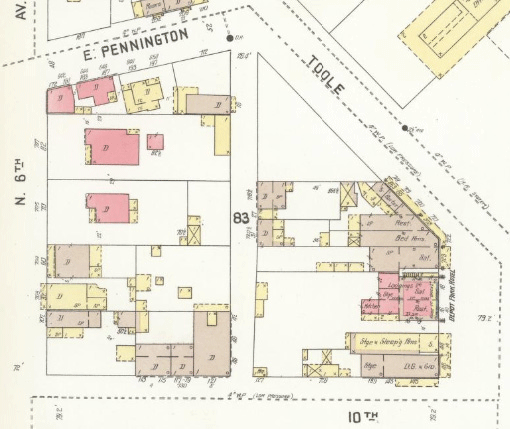
1901 Sanborn Map of Block 83 (courtesy Library of Congress).
In May 1990, Dr. Jonathan Mabry led the excavation of the west half of the block. Documentary research had revealed that numerous prominent families resided there between 1880 and 1910:
- Luke Radulovich, Austrian glassware and ceramics merchant
- Rosario and Maria (Cotton) Brena, dry goods and clothing merchant
- Henry Sheldon, electrical supplies and bicycle merchant
- Wenceslao and Adela (Garcia) Felix, clothing and dry goods merchant
- Adolfo and Amelia (Heras) Vasquez, blacksmith and carriage maker
- Winnall and Jesusita (Vasquez) Dalton, partner with Adolfo Vasquez in carriage making (notably, also Linda Ronstadt’s great-grandparents)
- Andres and Concepcion (Redondo) Rebeil, a Frenchman who had a women’s clothing store
Mabry’s excavation targeted shaft features (wells and privy/outhouse pits) that contained large numbers of artifacts and faunal bones. Some of the features could be associated with specific families. The late James Ayres analyzed the items, focusing on identifying their functions and date of manufacture.
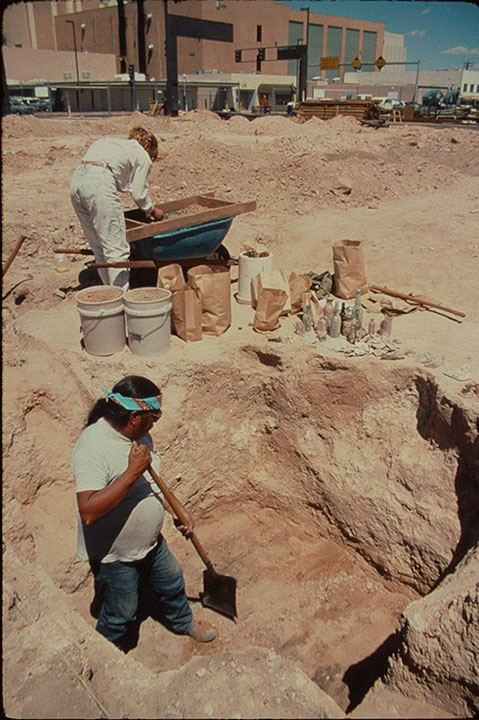
The excavation of a privy pit on the west side of Block 83. All of the soil was screened and all artifacts were collected for analysis. (photo by Jonathan Mabry).
Feature 18 on Lot 6 was a privy used by the Radulovich and Brena families. The high-quality items found in the privy pit provided a glimpse of what life was like for upper income families in Territorial Tucson. Food containers found here once held Shilling spices, Lea & Perrins Worcestershire sauce, milk, olives, catsup, chili powder, Mellins baby food, and fruit.
Most of the ceramic vessels were decorated and included American-made dishes at top of the feature, tossed by the Brenas. The lower portions of the pit contained many expensive French dishes made by the Limoges firm, thrown away by the Radulovich family. Both families had purchased matched sets of dishes.
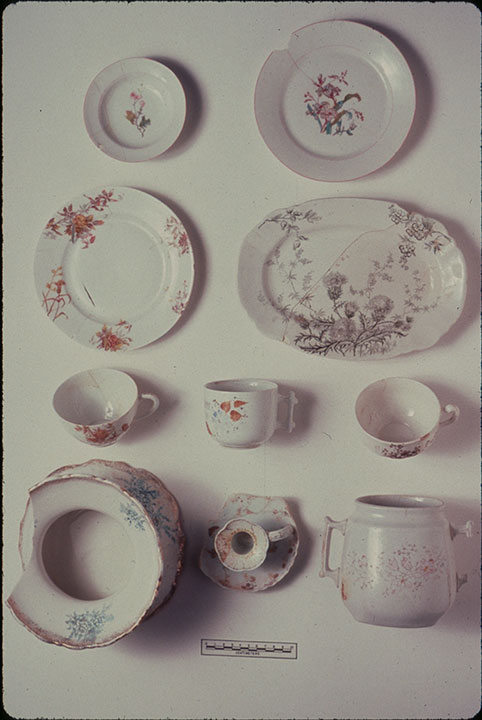
Decorated ceramic vessels from Feature 18, discarded by the Radulovich and Brena families.
Other artifacts recovered included spittoons, lamp chimneys and shades, a light bulb at the top of the pit, dominos, beer and wine bottles, and an expensive Armand Marseilles doll head.
A large number of proprietary medicine bottles were present. Prior to the 1906 Food and Drug Act, companies could concoct and market “medicines” that contained ingredients including cocaine, alcohol, chloroform, and other deleterious substances. The Radulovich and Brena families purchased many of the products, many of which came in containers with embossed product names. These included Wakelee’s Camoline (complexion aid), Ayer’s Pills (jaundice, indigestion, headache, dizziness, and biliousness), Petrole, Zymocide (an antiseptic), Dr. Kilmer’s Swamp Root Kidney Cure (kidney ailments), Munyon’s Inhaler Cures Colds Catarrah and all Throat and Lung Diseases, and Girolamo Pagliano (purgative syrup). It is likely that none of these products worked, although the alcohol in them might make someone feel better for a while.
In 2006, Desert Archaeology returned to excavate the east half of the block. Unlike the west half, this portion had been the location of a variety of businesses.
In 1883 these included the John D. McAuliffe Indian Curiosities, the Pioneer Restaurant, the Phoenix Exchange, and the Kee Sam Restaurant. In 1889 the block held the Cactus Saloon, Grossetta Grocery, and the Depot Beer Garden. In 1901 they included the Wee Kim Store, the Cactus Saloon, and the Depot Park Hotel. In 1909 there was the Santa Fe Restaurant, Cactus Saloon, the Ramona Hotel, the California Short Restaurant, the Olympia Fruit Store, the Cactus Barbershop, and the G. P. Wood Cigar Store.
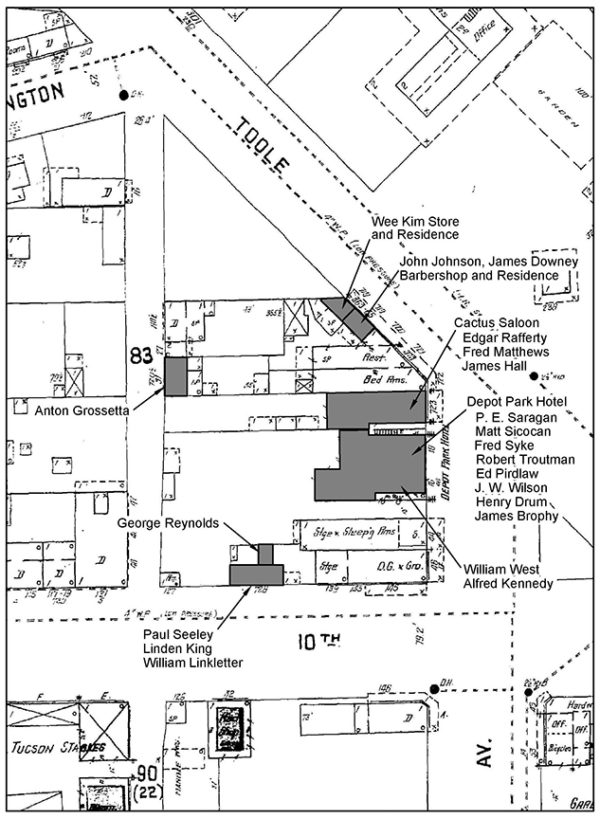
The 1901 Sanborn Fire Insurance map, labeled with identified business and residents from the 1900 census (image by Catharine Gilman).
The Southern Pacific Depot, where rail passengers and freight arrived and departed, was right across Toole Avenue, so many of the businesses catered to travelers. Passenger trains arrived in Tucson twice daily, stopping for about 20 minutes. People could hustle across Toole to purchase food, grab a quick drink, or buy a Native American souvenir, before returning on their eastward or westward journeys. Other people who were waiting for the train to arrive or were arriving to stay in Tucson could get a haircut, have a sandwich, or stay at a hotel.
The 2006 dig resulted in the discovery of 23 shaft features. However, it quickly became apparent that many had been targeted by bottle diggers in the 1960s and 1970s. During that time a bottle digging club flourished in Tucson and destroyed archaeological features in search of bottles and other artifacts.
The surviving intact shaft features were primarily on the southern half of the block and included a well from the Ramona Hotel, a privy from the Cactus Saloon, and a privy from a Chinese-operated laundry.
The hotel on the block provided rooms for people arriving via train. It had its origins as a one-story hotel as early as 1883. By 1890 it was called the Depot Park and was operated by an Austrian immigrant, George Sicocan. He had a beer garden at the back of the hotel, where we found the rows of planting pits for the trees. He also added a bowling alley and a dance floor. A room cost $6 a week in 1895. The adobe structure had a brick second floor added in 1896, with the first floor converted into a saloon. In 1901 it was renamed the Concordia Hotel (it was German-themed), and then the Oberon Hotel in 1902. Finally, it was called the Ramona Hotel in 1903. It was destroyed in a fire the following year but Sicocan had it rebuilt it as a 24-room hotel that would remain open until 1926.
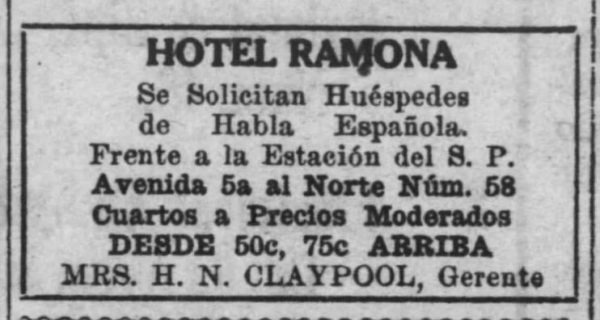
A Spanish-language advertisement for the Hotel Ramona (El Tucsonense, 8 March 1923).
At the back of Lot 9 we found Feature 289, an enormous oval-shaped well. It was 2.75 m long, 2 m wide, and was at least 4.6 m deep. It was dug prior to the installation of a city water system, and when that arrived, it was used for the disposal of trash.
It contained large amounts of thick whiteware dishes used in restaurants, many alcoholic beverage bottles, and tin cans. Also found were shot glasses, goblets, and tumblers from the beer garden, along with crown caps from beer bottles. Most beer bottles would have been returned to a bottler for a deposit. An unusual find was pieces from a porcelain toilet, indicating the hotel had running water. An intact light bulb was another rare find.
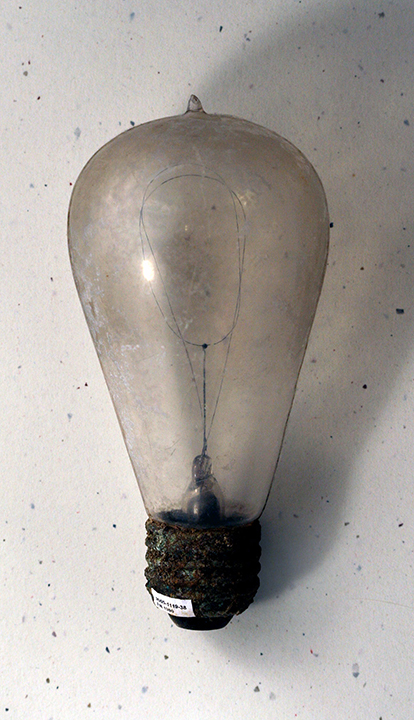
A light bulb from the Hotel Ramona well.
The well’s upper fill contained items from the 1910s to 1930, while below that were artifacts from about 1900 to 1909. The well was to the west of the beer garden planting pits, which were in turn to the west of the remnants of the hotel and saloon foundations.
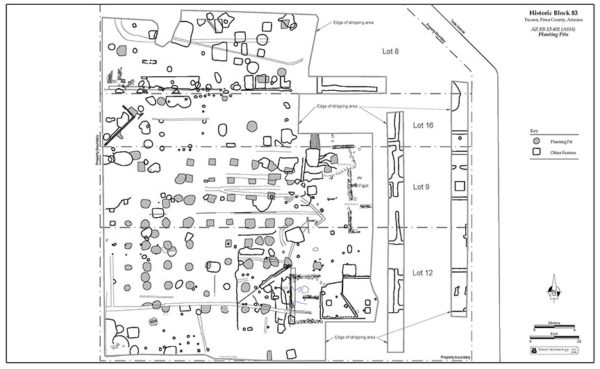
The numerous planting pits of George Sicocan’s beer garden lie between the oval well (near the words “property boundary” on the left side of the map) and the hotel foundations.
During the over 40 years the hotel operated probably thousands of people stayed in its rooms, ate in its restaurant, and enjoyed the shaded beer garden.
Block 83 gave up its secrets over a 26-year period. Even more secrets will be revealed in the next Field Journal post.


